Subscriber Exclusive
Reinventing Spanish Wool: Meet Wooldreamers
While the textile industry has changed dramatically since Spanish merino ruled, a new company southeast of Madrid aims to put Spanish wool back on top.
While the textile industry has changed dramatically since Spanish merino ruled, a new company southeast of Madrid aims to put Spanish wool back on top. <a href="https://farmfiberknits.com/re-inventing-spanish-wool-meet-wooldreamers/">Continue reading.</a>
https://farmfiberknits.com/cdn-cgi/image/format=auto/https://www.datocms-assets.com/101500/1719970764-dehesa-de-barrera.jpg?auto=format&w=900
Hundreds of years ago, Spain was the world’s hotspot for wool, exporting its merino to buyers willing to pay a premium for its soft hand and fine fiber. These days, Spain doesn’t even crack the top twenty of wool-producing nations. The team behind Wooldreamers has a plan to revive the Spanish wool industry.
An Impossible Dream?
It starts in the Spanish region of Castilla La-Mancha, home of the fictional Don Quixote. Yes, you will find windmills there, along with vineyards, castles, mountains, and lush plains. The region is known for its delicious Manchego, a firm cheese with a slightly sharp flavor made from sheep’s milk. It’s also the home of the Cobo family. Over a century ago, the Cobo family began processing wool: purchasing it from local ranchers, washing it by hand in the local river, then spinning and weaving it into blankets and other items. Over time, the family adapted to changes in the industry, purchasing large-scale scouring and spinning equipment. After processing the wool, they created woolen-spun yarns used to make industrial rugs.
Ramón Cobo began working in the family business when he was fourteen years old; he’s the third generation of the Cobo family to operate the mill. He began by honing his skills in sorting and classifying wool. Later, he learned how to run and troubleshoot the mill’s machinery. Through the years, Cobo noticed troubling trends in the textile industry. Production had largely shifted away from natural wool to synthetic fibers. At the same time, operations were being shifted to overseas mills as a cost-cutting measure. As demand for natural fibers dropped precipitously, farmers and ranchers began to focus on sheep breeds used for meat and dairy products. The number of Spanish mills plummeted. Ramón Cobo wondered how he could maintain his family’s business before the Spanish wool trade died out completely.
The Cobo mill was mainly producing industrial-grade wool used for carpeting when an independent handdyer approached Ramón Cobo, looking to source a handknitting yarn manufactured from Spanish wool. Despite his lack of familiarity with the knitting and crochet industry, Cobo was intrigued. He imagined a future where Spanish wool was once again a desirable and in-demand commodity. Cobo began educating himself about issues such as sustainability, pondering ways to replace synthetic fibers with the very wool now dismissed as a waste product.
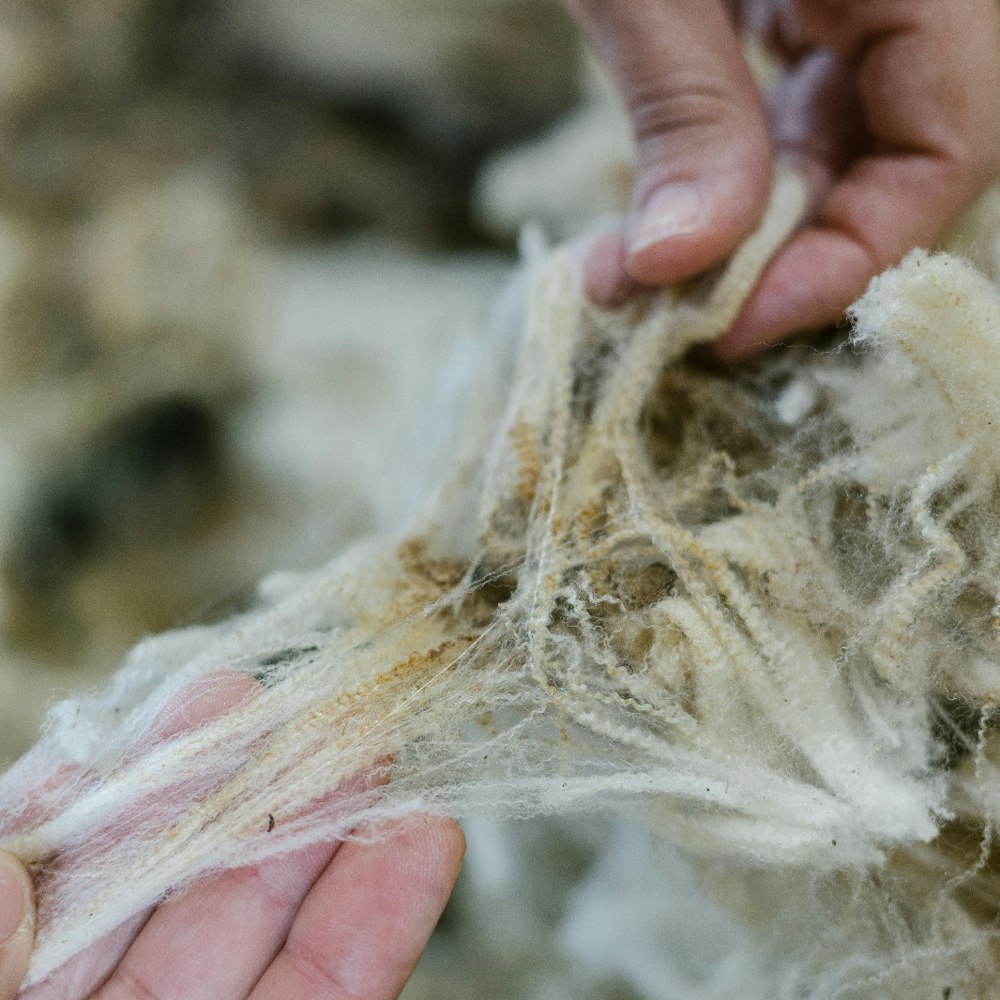 Wool like this fine, crimpy fleece is transformed into yarns full of character at Wooldreamers’ mill southeast of Madrid.
Wool like this fine, crimpy fleece is transformed into yarns full of character at Wooldreamers’ mill southeast of Madrid.
Living the Dream
When Wooldreamers was founded in 2020, one of its main goals was to support local ranchers and fairly compensate them for their wool. Ramón Cobo began developing relationships with ranchers and shepherds all over Spain, trading knowledge and comparing techniques for producing high-quality wool. As word continued to spread, more farms and ranches contacted Wooldreamers, eager to participate. Cobo became interested not only in reviving interest in Spain’s storied merino wool but also introducing local breeds to a wider audience.
SUBSCRIBER EXCLUSIVE
Hundreds of years ago, Spain was the world’s hotspot for wool, exporting its merino to buyers willing to pay a premium for its soft hand and fine fiber. These days, Spain doesn’t even crack the top twenty of wool-producing nations. The team behind Wooldreamers has a plan to revive the Spanish wool industry.
An Impossible Dream?
It starts in the Spanish region of Castilla La-Mancha, home of the fictional Don Quixote. Yes, you will find windmills there, along with vineyards, castles, mountains, and lush plains. The region is known for its delicious Manchego, a firm cheese with a slightly sharp flavor made from sheep’s milk. It’s also the home of the Cobo family. Over a century ago, the Cobo family began processing wool: purchasing it from local ranchers, washing it by hand in the local river, then spinning and weaving it into blankets and other items. Over time, the family adapted to changes in the industry, purchasing large-scale scouring and spinning equipment. After processing the wool, they created woolen-spun yarns used to make industrial rugs.
Ramón Cobo began working in the family business when he was fourteen years old; he’s the third generation of the Cobo family to operate the mill. He began by honing his skills in sorting and classifying wool. Later, he learned how to run and troubleshoot the mill’s machinery. Through the years, Cobo noticed troubling trends in the textile industry. Production had largely shifted away from natural wool to synthetic fibers. At the same time, operations were being shifted to overseas mills as a cost-cutting measure. As demand for natural fibers dropped precipitously, farmers and ranchers began to focus on sheep breeds used for meat and dairy products. The number of Spanish mills plummeted. Ramón Cobo wondered how he could maintain his family’s business before the Spanish wool trade died out completely.
The Cobo mill was mainly producing industrial-grade wool used for carpeting when an independent handdyer approached Ramón Cobo, looking to source a handknitting yarn manufactured from Spanish wool. Despite his lack of familiarity with the knitting and crochet industry, Cobo was intrigued. He imagined a future where Spanish wool was once again a desirable and in-demand commodity. Cobo began educating himself about issues such as sustainability, pondering ways to replace synthetic fibers with the very wool now dismissed as a waste product.
 Wool like this fine, crimpy fleece is transformed into yarns full of character at Wooldreamers’ mill southeast of Madrid.
Wool like this fine, crimpy fleece is transformed into yarns full of character at Wooldreamers’ mill southeast of Madrid.
Living the Dream
When Wooldreamers was founded in 2020, one of its main goals was to support local ranchers and fairly compensate them for their wool. Ramón Cobo began developing relationships with ranchers and shepherds all over Spain, trading knowledge and comparing techniques for producing high-quality wool. As word continued to spread, more farms and ranches contacted Wooldreamers, eager to participate. Cobo became interested not only in reviving interest in Spain’s storied merino wool but also introducing local breeds to a wider audience. [PAYWALL]
Wooldreamers is developing relationships with farmers who practice regenerative agriculture. Some tend their sheep through transhumance—moving their flocks from pasture to pasture throughout the year, literally following in the centuries-old footsteps of Spanish shepherds. These methods improve the well-being of the animals as well as the land.
Because Wooldreamers sources yarns from many ranches and farms, its yarn lines include both “single-origin” yarns, where all the wool comes from one ranch or flock, and yarns blended from a variety of wools from different ranches. If sufficient fiber is available, the wool can be used for an evergreen line, but Wooldreamers also uses smaller amounts to create limited-edition yarns.
One way that Wooldreamers ensures uniformly high quality is maintaining control throughout the milling process. Ramón Cobo personally selects all materials used to create the company’s yarn; the fiber is then spun in Wooldreamers’ own Okeo-Tex Standard 100 and GOTS-certified mill. By sourcing Spanish wools and concentrating production in a single facility, Wooldreamers keeps the yarn’s production chain short. The company also prioritizes animal welfare, ensuring that fiber animals are treated humanely. Because Wooldreamers’ fiber can be traced back to the specific ranch or flock, the company can make sure all the animals that provide their fiber are well cared-for.
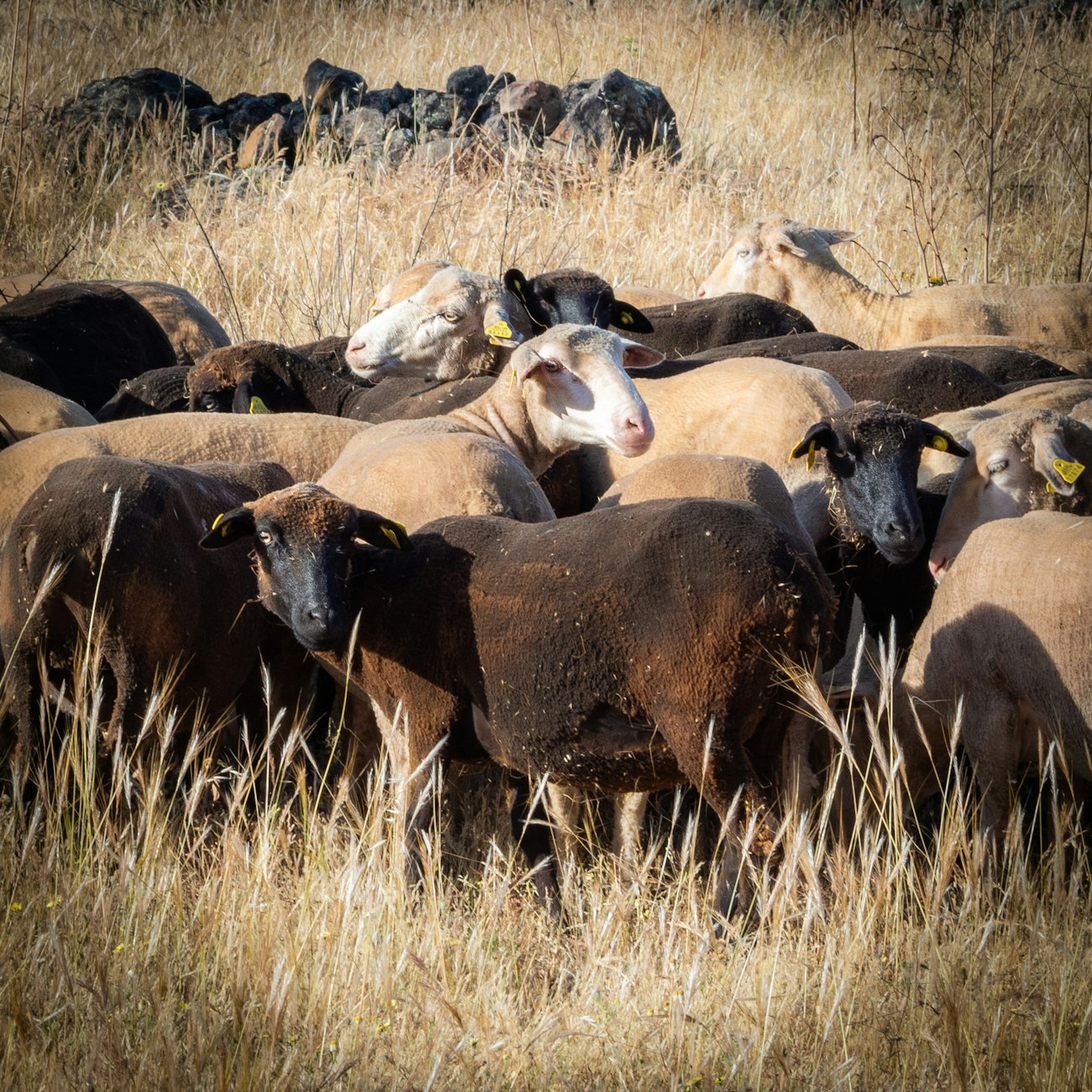 The merino wool used in La Rinconada yarn comes from a free-grazing flock of black and white sheep.
The merino wool used in La Rinconada yarn comes from a free-grazing flock of black and white sheep.
A Dream on the Needles
Hundreds of years ago, Spanish merino was the gold standard for wool all over western Europe. While theories of its origin differ, it’s likely that the breed developed in part from the import of North African sheep to Spain, perhaps as early as the 12th or 13th centuries. Careful breeding over many years yielded a wool of unusual fineness and softness. Monarchs Ferdinand and Isabella promoted the development of merino wool and by the 16th century, Spain had developed a monopoly in its export. Trade protections helped preserve this monopoly; at one point, exporting merino sheep was a crime punishable by death.
Eventually those trade protections lapsed. Spanish merino sheep were sent to other countries, including France. Breeders all over the world began feverishly working to create their own flocks by cross-breeding. Spain’s dominance in the wool trade was, sadly, over.
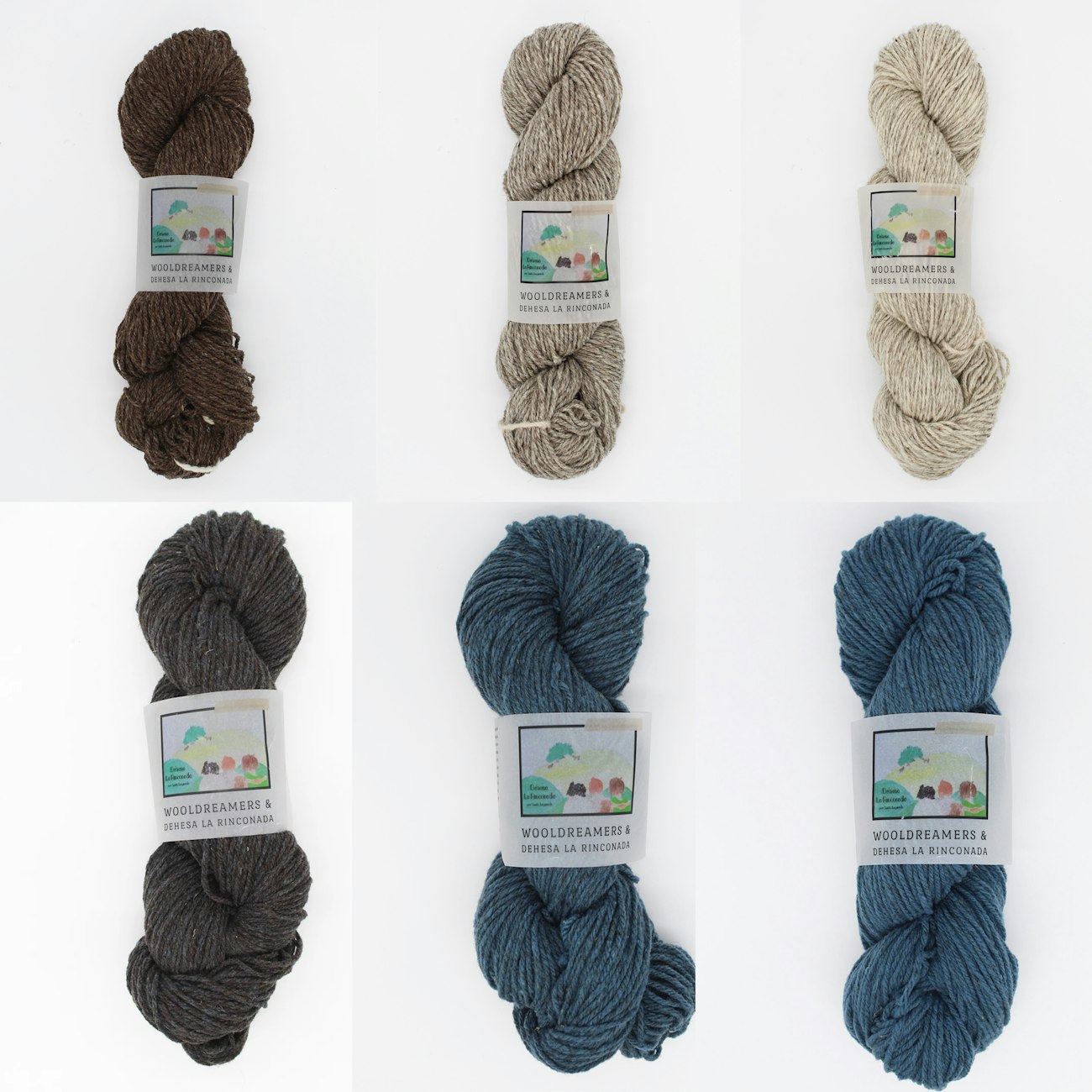 Applying the same dyes over blends of dark and light wool in La Rinconada yarns provides a rich variety of hues.
Applying the same dyes over blends of dark and light wool in La Rinconada yarns provides a rich variety of hues.
Wooldreamers’ first yarn pays homage to this storied tradition. Dehesa de Berrera (top) is pure Spanish merino, derived from a flock started by monks over a hundred years ago. It’s a 3-ply woolen-spun yarn that comes in both DK and fingering weights and a variety of rich colors. A second all-merino yarn, La Rinconada, comes from a free-grazing flock of both white and black sheep. Blending light and dark fibers creates depth of color, and the yarn is dyed with Okeo-Tex–certified pigments.
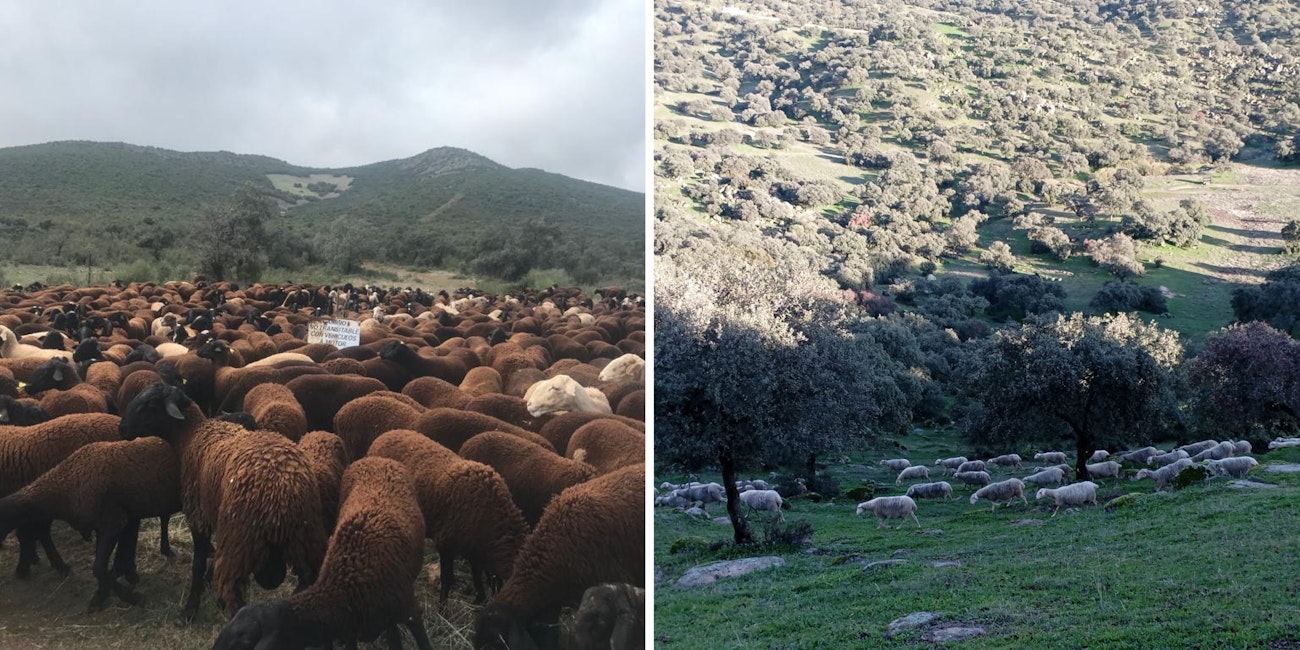 The wool for Manchelopi yarn comes from two flocks, a free-grazing dark-colored flock (left) and a light-colored transhumant flock. Manchega sheep are best known for their milk, which is used for Manchego cheese.
The wool for Manchelopi yarn comes from two flocks, a free-grazing dark-colored flock (left) and a light-colored transhumant flock. Manchega sheep are best known for their milk, which is used for Manchego cheese.
Another fascinating aspect to the company’s yarn lines is its use of local breeds of wool, including breeds that aren’t traditionally considered “fiber” breeds. Take the Manchega breed. Manchega sheep are typically bred for dairy products (in particular, the fabled Manchego cheese) and their wool is discarded. Wooldreamers began reclaiming this wool, using it to create its Manchelopi yarn line. A soft unspun roving-like yarn (inspired by the unspun Icelandic lopi), Manchelopi is spun from two Manchega flocks, a light-colored transhumant flock and a free-grazing flock that produces an unusually dark wool. Manchelopi is composed of two loosely wound strands that can be knitted singly or by combining both strands for a thicker yarn.
Wool Plus
Wooldreamers has also taken advantage of Spain’s history as a center of cotton production. Its Saona yarn line is a 50/50 blend of Spanish wool and Andalusian cotton. Spanish merino and Manchega wool are collected from small local ranches, focusing on the cream of each ranch’s crop. The merino and Manchega are combined with Andalusian cotton to create a delightful fingering weight yarn. By using local wool and its own mill, Saona maintains a very small carbon footprint, one of the smallest on the market.
Sustainability, preserving merino’s heritage, reducing industry waste, and of course, producing beautiful handknitting yarns: Wooldreamers is a dream come true.
Find Wooldreamers at their website and on Instagram..
Carol J. Sulcoski is a knitting author, designer, and teacher. She’s published seven knitting books, including Knitting Ephemera, which is full of knitting facts, history, and trivia. Her articles have appeared in publications such as Vogue Knitting, Modern Daily Knitting, Noro Magazine, the Craft Industry Alliance website, and others. She lives outside Philadelphia and teaches at knitting events, shops, and guilds. Her website is blackbunnyfibers.com.
 Wool like this fine, crimpy fleece is transformed into yarns full of character at Wooldreamers’ mill southeast of Madrid.
Wool like this fine, crimpy fleece is transformed into yarns full of character at Wooldreamers’ mill southeast of Madrid.
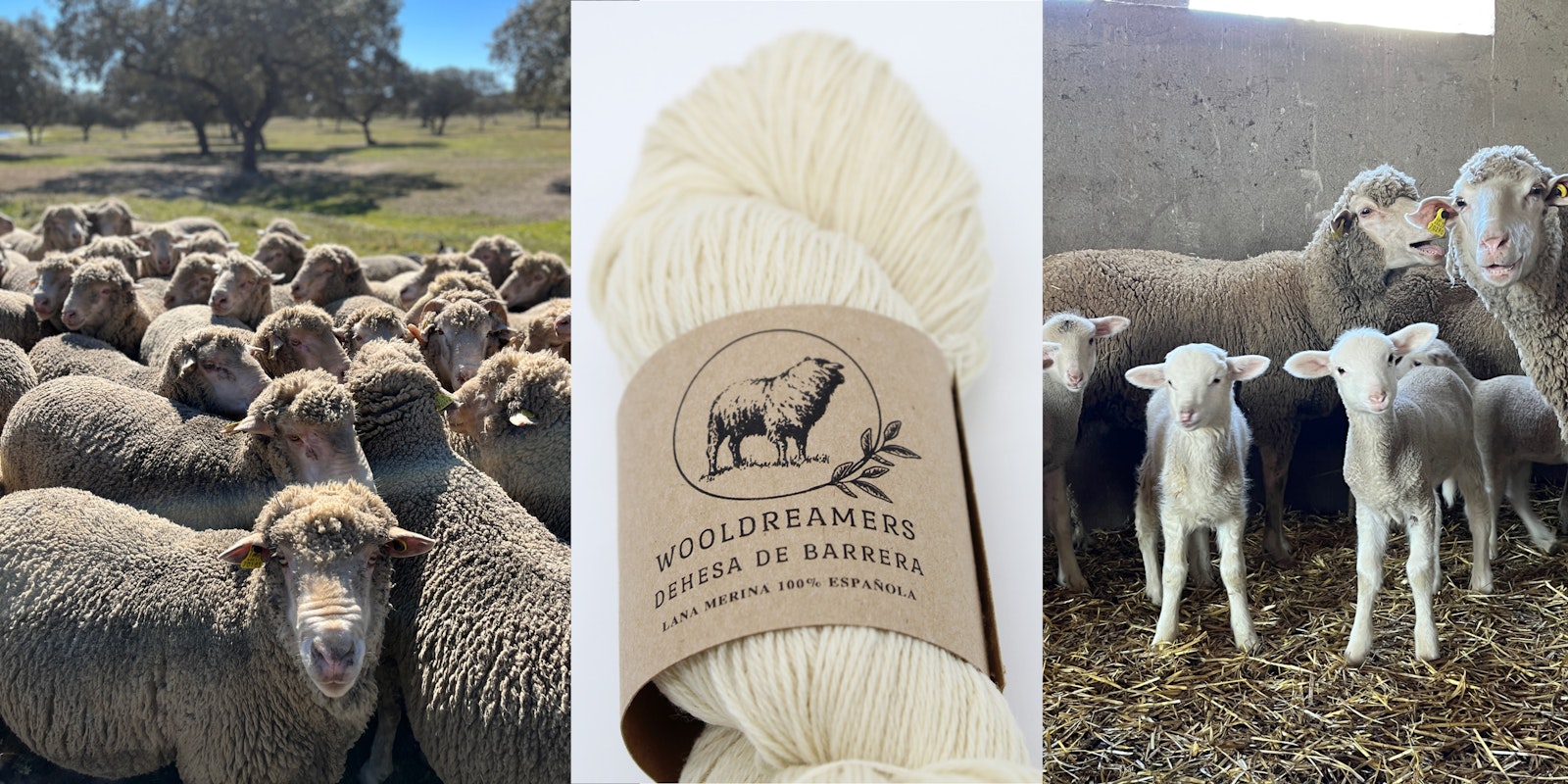
 The merino wool used in La Rinconada yarn comes from a free-grazing flock of black and white sheep.
The merino wool used in La Rinconada yarn comes from a free-grazing flock of black and white sheep. Applying the same dyes over blends of dark and light wool in La Rinconada yarns provides a rich variety of hues.
Applying the same dyes over blends of dark and light wool in La Rinconada yarns provides a rich variety of hues. The wool for Manchelopi yarn comes from two flocks, a free-grazing dark-colored flock (left) and a light-colored transhumant flock. Manchega sheep are best known for their milk, which is used for Manchego cheese.
The wool for Manchelopi yarn comes from two flocks, a free-grazing dark-colored flock (left) and a light-colored transhumant flock. Manchega sheep are best known for their milk, which is used for Manchego cheese.